|
Sandro Botticelli.org, welcome & enjoy!

|
|
Here are all the paintings of CIGOLI 01
| ID |
Painting |
Oil Pantings, Sorted from A to Z |
Painting Description |
| 28939 |
 |
Ecce Homo |
mk65
Oil on canvas
68 7/8x53 3/8in
Pitti
|
| 6025 |
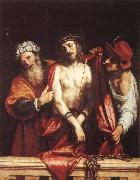 |
Ecce Homo f |
1607
Oil on canvas, 175 x 135 cm
Galleria Palatina (Palazzo Pitti), Florence |
| 51210 |
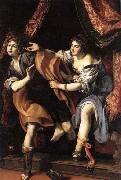 |
Joseph and Potiphar's Wife |
1610
Oil on canvas |
| 83627 |
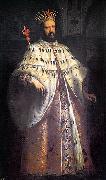 |
Portrait of Cosimo I de Medici |
16th century
Medium Oil
cyf |
| 28995 |
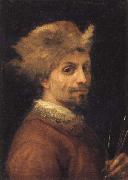 |
Self-Portrait |
mk65
Oil on canvas
23x17 5/16in
Uffizi,Vasari Corridor
|
| 71055 |
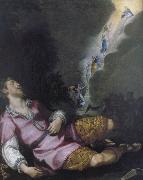 |
songe de hacob |
mk289 nancy musee des beaux arts |
| 84627 |
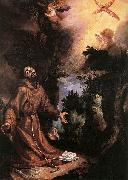 |
St Francis Receives the Stigmata |
Date 1596(1596)
Medium Oil on wood
Dimensions Height: 247 cm (97.2 in). Width: 171 cm (67.3 in).
cjr |
| 86955 |
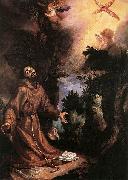 |
St Francis Receives the Stigmata |
1596(1596)
Medium Oil on wood
cyf |
| 6026 |
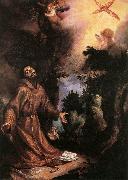 |
St Francis Receives the Stigmata g |
1596
Oil on wood, 247 x 171 cm
Galleria degli Uffizi, Florence |
| 28984 |
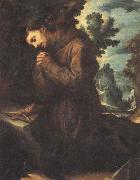 |
St.Francis in Prayer |
mk65
Oil on canvas
55 5/16x45 1/16in
Pitti,Palatine Gallery
|
| 28938 |
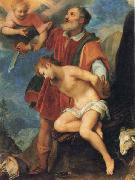 |
The Sacrifice of Isaac |
mk65
Oil on canvas
69 1/8x52 1/16in
Pitti,
|
|
|
| CIGOLI
|
| Italian Baroque Era Painter, 1559-1613
was an Italian painter and architect of the late Mannerist and early Baroque period, trained and active in his early career in Florence, and spending the last nine years of his life in Rome. Lodovico Cardi was born at Villa Castelvecchio di Cigoli, in Tuscany, whence the name by which he is commonly known. Initially, Cigoli trained in Florence under the fervid mannerist Alessandro Allori. Later, influenced by the most prominent of the Contra-Maniera painters, Santi di Tito, as well as by Barocci, Cigoli shed the shackles of mannerism and infused his later paintings with an expressionism often lacking from 16th century Florentine painting. For example, for the Roman patron, Massimo Massimi, he painted an Ecce Homo[1] (now in Palazzo Pitti). Supposedly unbenknownst to any of the painters, two other prominent contemporary painters, Passignano and Caravaggio, had been requested canvases on the same theme. It is unclear if they are completely independent. Cigoli's painting seems to have been made with knowledge of Caravaggio's canvas; however, while Cigoli's work lacks the power of Caravaggio's naturalism, the background shade and sparse foreground shows how much he was moving away from crowded Florentine historical paintings. This work was afterwards taken by Bonaparte to the Louvre, and was restored to Florence in 1815. One of his early paintings was of Cain slaying Abel. He then gained the employ of the Grand-Duke in some works for the Pitti Palace, where he painted a Venus and Satyr and a Sacrifice of Isaac. Other important pictures are St. Peter Healing the Lame Man in St Peter's; Conversion of St. Paul in the church of San Paolo fuori le Mura, and a Story of Psyche in a fresco incorporated in the decorative scheme of the Villa Borghese; a Martyrdom of Stephen, which earned him the name of the "Florentine Correggio", a Stigmata of St. Francis at Florence. Cigoli was made a Knight of Malta at the request of Pope Paul III. Cigoli, a close personal friend of Galileo Galilei, painted a last fresco in the dome of the Pauline chapel of the church of Santa Maria Maggiore in Rome, depicting the Madonna standing upon a pock-marked lunar orb. This is the first extant example of Galileo's discoveries about the physical nature of the moon (as he himself drew it in Sidereus Nuncius) having penetrated the visual arts practice of his day. Until this image, the moon in pictures of the Virgin had always been mythical and smooth, perfectly spherical as described by Platonic & Ptolemaic tradition.
|
|
 All the Sandro Botticelli's Oil Paintings
All the Sandro Botticelli's Oil Paintings

Supported by oil paintings and picture frames

Copyright Reserved
|

